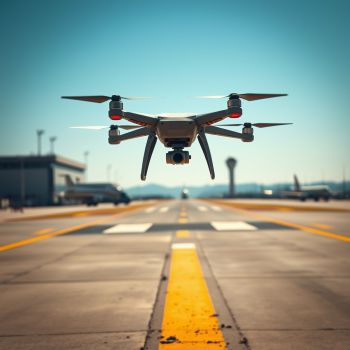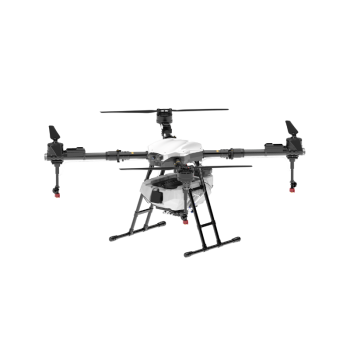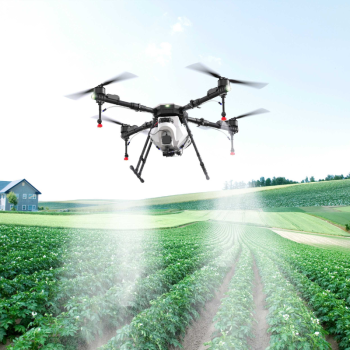The future application fields of agricultural drones are expanding
Expanding Frontiers: The Future Applications of Agricultural Drones Beyond Crop Protection
Agricultural drones, initially revolutionizing plant protection through efficient pesticide and fertilizer application, are now poised to redefine broader farming practices. Advancements in sensor technology, artificial intelligence, and connectivity are unlocking novel use cases, from precision livestock management to climate-resilient agriculture. Below, we explore emerging domains where drone innovation is reshaping industry standards.
Precision Livestock Monitoring and Management
Drones are transitioning from crop-centric tools to vital assets in livestock farming, offering real-time insights into animal health and behavior. Equipped with thermal imaging cameras, these devices can detect early signs of illness by identifying feverish individuals in large herds, enabling prompt veterinary intervention. Similarly, multispectral sensors analyze grazing patterns to optimize pasture rotation, preventing overgrazing and soil degradation.
Behavioral analytics is another promising avenue. By tracking movement data, drones help farmers identify social hierarchies or stress indicators in herds, such as clustering or reduced mobility. This information supports welfare-focused practices, like adjusting feed distribution or shelter access. In remote or rugged terrains, drones also reduce the need for manual herding, minimizing labor costs and human-wildlife conflicts.
The integration of AI further enhances livestock management. Machine learning algorithms process drone-collected data to predict calving times, detect lameness, or monitor weight gain trends. These predictive capabilities empower farmers to make data-driven decisions, improving productivity while adhering to animal welfare standards.
Environmental Stewardship and Biodiversity Conservation
Agricultural drones are increasingly instrumental in promoting sustainable land use and protecting ecosystems. For instance, they monitor soil erosion by capturing high-resolution images of topography changes over time, guiding erosion control measures like contour plowing or terracing. In wetland areas, drones track water quality parameters, such as turbidity or algal blooms, alerting farmers to potential pollution sources from adjacent farms.
Biodiversity conservation is another critical application. Drones survey wildlife populations in agricultural landscapes, helping balance crop production with habitat preservation. By mapping nesting sites or migratory corridors, farmers can design buffer zones or agroforestry systems that support biodiversity without sacrificing yield. Additionally, drones detect invasive species early, enabling targeted removal before they overrun native ecosystems.
Carbon sequestration monitoring is also gaining traction. Drones equipped with LiDAR technology measure tree height and biomass in agroforestry systems, quantifying carbon storage potential. This data aids farmers in participating in carbon credit markets, incentivizing climate-smart practices like reforestation or reduced tillage.
Climate-Resilient Agriculture and Disaster Response
As extreme weather events intensify, drones are becoming indispensable for climate adaptation strategies. They assess crop stress under drought conditions by detecting variations in leaf temperature or chlorophyll content, guiding irrigation scheduling to conserve water. In flood-prone regions, drones create elevation maps to identify low-lying areas at risk, informing drainage system upgrades or flood-resistant crop selection.
Post-disaster recovery is another emerging role. After hurricanes or wildfires, drones rapidly evaluate damage to infrastructure and crops, prioritizing rescue efforts or insurance claims. They also aid in replanting by dispersing seeds over inaccessible terrain, accelerating ecosystem recovery. For example, drones can drop seed balls containing native species in burn scars, promoting natural regeneration while reducing soil erosion.
Climate modeling benefits from drone-collected microclimate data, such as humidity or wind patterns at field level. This granular information improves weather forecasting accuracy, helping farmers anticipate frost, heatwaves, or storms. By integrating drone insights with climate models, stakeholders can develop adaptive strategies, like shifting planting dates or adopting drought-tolerant varieties.
Urban Agriculture and Vertical Farming Integration
The rise of urban agriculture presents unique challenges, from space constraints to air quality management, where drones offer innovative solutions. In rooftop gardens or vertical farms, drones perform tasks like pollination, mimicking the role of bees in controlled environments. They also monitor plant health in dense, multi-layered setups, using hyperspectral imaging to detect nutrient deficiencies or disease outbreaks before they spread.
Air quality regulation is another urban-specific application. Drones measure particulate matter or greenhouse gas concentrations near agricultural installations, ensuring compliance with local emissions standards. This is particularly relevant for indoor vertical farms, where ventilation systems must balance energy efficiency with crop health.
Logistical optimization is equally vital. Drones streamline supply chains by delivering fresh produce from urban farms to local markets, reducing transportation emissions and food miles. They also inspect infrastructure, such as hydroponic systems or LED lighting, for maintenance needs, minimizing downtime and ensuring consistent yield quality.
Conclusion
The future of agricultural drones extends far beyond pesticide application, encompassing livestock welfare, environmental conservation, climate resilience, and urban farming. As technology evolves, these devices will increasingly serve as multifunctional platforms, integrating with IoT networks, blockchain, and autonomous systems to create interconnected smart farms. By embracing these innovations, the agricultural sector can address global challenges like food security, biodiversity loss, and climate change while fostering sustainable growth.




